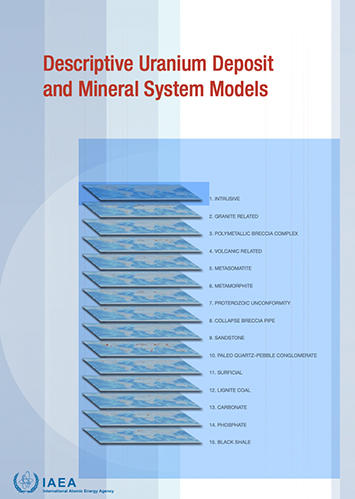Descriptive Uranium Deposit and Mineral System Models
20.01.2022
This publication provides a set of systematic descriptive models for each uranium deposit type, subtype and class, using a consistent approach to summarise the same types of information for each. Each model is intended to have a standalone capability, using a tabular style that is typical of conventional mineral resource industry standards. Each deposit model includes a map showing the distribution of deposits, and grade-tonnage graphs. Collectively, these databases and models form a basis for assessing the global distribution of uranium deposits and evaluating supply-demand scenarios. With these, the IAEA can provide the capability for Member States to assess the potential of remaining — or speculative — uranium resources for long term supply beyond identified resources in a consistent and reproducible manner.
More Information on reusing IAEA copyright material.
